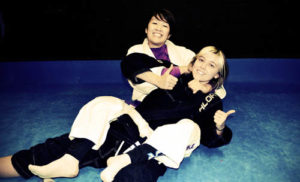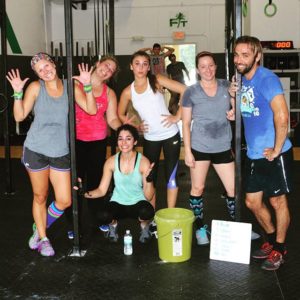I originally wrote the following article a few years ago. It still says everything I want/need to say on the subject, and I re-post it here after running into the same problem this past weekend that caused me to write the original piece. Too many people throw around the term “pressure testing” without a single clue as to how to define it. And, as such, practitioners are given credit for pressure testing when in reality they are doing nothing of the sort. So I re-post this hoping new people take advantage.
We need to ask ourselves ; “Why do the techniques advocated here:”
“Not look anything like what is working here? ” :
https://www.youtube.com/watch?v=2-B1vUpmqVk
The answer is that these two separate groups are not testing their material the same way. They might use the same language, but it does not necessarily mean the same things.
It seems that in today’s training community, everybody throws around the term “pressure testing” in order to justify the functionality of their method or technique. What is usually meant by pressure testing? Generally, it refers to some kind of force-on-force training where two or more people can actually apply techniques with energy that simulates real world conditions and situations. Unfortunately, like the quote from The Princess Bride “You keep using that word. I do not think it means what you think it means”, most of them really don’t use it correctly. Rather than being an objective standard, it has too often become whatever the person wants it to mean as long as they look good. For it to have true worth, we have to have a defined standard of measure. Then, we can use it as a way to judge.
The most amusing part of all this to me is that I was part of the martial arts world in the early to mid-eighties when the term first started getting thrown around, and the outcry and antagonism towards that concept by many of the ones who today try to hijack the phrase makes me laugh.
One of the most prominent and public, especially in the U.S. of those who first advocated the need to pressure test was Bruce Lee. He ruffled a lot of traditionalist’s feathers when he compared most typical training methods to be like learning to swim on dry land. He wrote and lectured many times on the need to put some gear on and actually – GASP! – fight. Another early proponent was Jon Bluming, who had years of hardcore judo and kyokushinkai karate and was actually one of the first to talk about what we now term MMA. Unfortunately, since he was based in Europe, a lot of what he taught and wrote didn’t have the impact in the U.S. that Lee did. After Lee’s death, some of his students such as Dan Inosanto continued his teachings and ideas, and through some of Inosanto’s students like Paul Vunak, more and more people became exposed to this idea. And, with the arrival of Gracie Jiu-jitsu and its open challenge, and then the first Ultimate Fighting Championship, the concept exploded.
Still, even then, for years afterwards, many martial artists tried to dismiss any use of the idea of pressure testing as a needed component. One magazine columnist in particular, who now writes a monthly MMA column, derided all things MMA up into 2004! However, with the internet, DVDs, and social media, it became easy for the most inexperienced layman to understand the powerful need to pressure test. And so, even most of the die-hard haters have had to adjust their own presentation. However, as I said earlier, they do not always understand what they are trying to do, or even worse, intentionally try to subvert the principle. So how do we know if their testing actually meets the standard? Here are some easy to follow and understand guidelines. There are four basic components that must be present.
First, let me say that the following is based on years of study and research, and involved a number of gifted and talented instructors and fighters, who coalesce around the finest internet discussion forum, Total Protection Interactive (www.totalprotectioninteractive.com), and who were gathered together by Craig Douglas, also known as “Southnarc”. The group consists of people such as Paul Sharp (http://sharpdefense.wordpress.com/), Larry Lindenman, Chris Fry (http://www.mdtstraining.com/), Claude Werner (http://www.dryfire-practice.com/), Ryan Mayfield, Paul Gomez (RIP), and others, as well as myself. So while I had a small part in the following formulation, it was very much a group effort.
Resisting Opponent
The first principle of pressure testing that must be adhered to is that we need a resisting opponent. This is the base from where everything comes from. It also seems to be very intuitive. If we want to test whether our technique or concept works against resistance, we need to have someone provide that resistance! The problem is this is where most people start and end. While physical resistance is a key factor, it is only one piece of the puzzle.
Opposing Will
The second feature is opposing will. By this I mean an active attempt at preventing an action from occurring. Not just physical resistance, but mental resistance as well. If we use a technique such as an empty hand response to a knife attack for instance, it is not enough that the “bad guy” tries to physically mimic a real attack; he has to commit himself to said attack.
Malevolent Intent
The third component is malevolent intent. This is a term I first heard used by a LEO whose TPI moniker is KIT. It perfectly describes that beyond the mental and physical resistance our training partner has to give us, he also must want us to lose. Not just make us fail by our technique not working, but by us having to suffer a visible loss. In the case of the knife counter from above, our training partner must be trying to defeat our technique and put us in a position where he can repeatedly “stab” us. It is not enough to stop the technique, but he must also want to crush us. If he can succeed in doing so, he demonstrates it clearly that our whole concept/technique/method is in error.
Freedom of Action
The fourth and final part is freedom of action. In my opinion, this is the biggest aspect that many proponents of pressure testing miss. We can have all the prior components in place, but if all we allow our adversary to do is a finite number of things, are we really being true to the problem? For example, in the 90’s, it was really popular with the traditional martial art crowd to show how easy it was for their art to handle a grappler. The typical photo layout had the “good guy” standing ready to go while the evil grappler almost always shot in for a double leg takedown, and the good guy used his favorite technique to stifle the attack. The problem with this (outside of the fact that the “grappler” never seemed to know how to properly execute the takedown) was that the defender was only defending against a single and known move. If the grappler had also been allowed to throw strikes as an example, the difficulty would have increased exponentially, to the point that the defense would very likely to become overwhelmed. To truly test our methods under real world pressure, we have to simulate the real world, including the fact that we cannot know what are our opponent is going to do! It is a simple idea, yet every time I get into a debate about it, almost no one takes this into account. Somehow, they believe they will always be able to sense the attack and respond accordingly, like some kind of real life Jedi Knight. Unfortunately, that won’t happen, and to rely on it is to set yourself up for failure.
To sum up, if your pressure testing does not have all four of these components, you are not truly pressure testing. If you can conclusively show you put your favored technique/method/system/skill through this prism, then you can probably stand up to any scrutiny.




